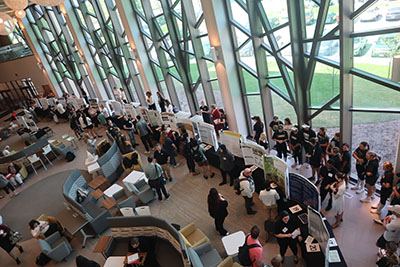A Closer Look at Agneta Block's Bird Illustration: A Case Study in Recovering the Histories of Women in Early Modern European Science
Student Type
Graduate
Faculty Sponsor
Dr. Sarah Cantor
Date
4-12-2022
College Affiliation
College of Arts and Humanities
Department
Art History and Visual Culture
Submission Type
Oral Presentation
Abstract
Agneta Block (1629-1704) was a Dutch Mennonite naturalist, collector, and patron, as well as an artist herself. In a family portrait painted by Jan Weenix (1642-1719) depicting Agneta in her renowned garden estate, it is the pineapple plant which usually receives the most attention, as she is cited as the first person in the Dutch Republic to have successfully cultivated one. However, while best known for such horticultural achievements and botanical interests, little attention has been paid to her ornithological endeavors. Agneta is known to have kept an aviary at her gardens, as well as a natural history cabinet which included avian specimens, and had her exotic birds documented on paper just as she did her flowers; and in Weenix's painting, it is a picture of the former she proudly displays rather than the latter. So, what kind of bird is it, and why does it matter? I will present my formal identification of the species depicted, and what it can tell us about Agneta's unrecognized place in early modern European ornithology.
Recommended Citation
Martinez, Deniz, "A Closer Look at Agneta Block's Bird Illustration: A Case Study in Recovering the Histories of Women in Early Modern European Science" (2022). 2022 Student Academic Showcase. 9.
https://digitalcommons.lindenwood.edu/src/Oral_Presentations/Session2/9
Publication Date
2022
A Closer Look at Agneta Block's Bird Illustration: A Case Study in Recovering the Histories of Women in Early Modern European Science
Agneta Block (1629-1704) was a Dutch Mennonite naturalist, collector, and patron, as well as an artist herself. In a family portrait painted by Jan Weenix (1642-1719) depicting Agneta in her renowned garden estate, it is the pineapple plant which usually receives the most attention, as she is cited as the first person in the Dutch Republic to have successfully cultivated one. However, while best known for such horticultural achievements and botanical interests, little attention has been paid to her ornithological endeavors. Agneta is known to have kept an aviary at her gardens, as well as a natural history cabinet which included avian specimens, and had her exotic birds documented on paper just as she did her flowers; and in Weenix's painting, it is a picture of the former she proudly displays rather than the latter. So, what kind of bird is it, and why does it matter? I will present my formal identification of the species depicted, and what it can tell us about Agneta's unrecognized place in early modern European ornithology.


